Christian Mauch
From Clean Room to Machine Room: Commissioning of the First-Generation BrainScaleS Wafer-Scale Neuromorphic System
Mar 22, 2023Abstract:The first-generation of BrainScaleS, also referred to as BrainScaleS-1, is a neuromorphic system for emulating large-scale networks of spiking neurons. Following a "physical modeling" principle, its VLSI circuits are designed to emulate the dynamics of biological examples: analog circuits implement neurons and synapses with time constants that arise from their electronic components' intrinsic properties. It operates in continuous time, with dynamics typically matching an acceleration factor of 10000 compared to the biological regime. A fault-tolerant design allows it to achieve wafer-scale integration despite unavoidable analog variability and component failures. In this paper, we present the commissioning process of a BrainScaleS-1 wafer module, providing a short description of the system's physical components, illustrating the steps taken during its assembly and the measures taken to operate it. Furthermore, we reflect on the system's development process and the lessons learned to conclude with a demonstration of its functionality by emulating a wafer-scale synchronous firing chain, the largest spiking network emulation ran with analog components and individual synapses to date.
hxtorch.snn: Machine-learning-inspired Spiking Neural Network Modeling on BrainScaleS-2
Dec 23, 2022Abstract:Neuromorphic systems require user-friendly software to support the design and optimization of experiments. In this work, we address this need by presenting our development of a machine learning-based modeling framework for the BrainScaleS-2 neuromorphic system. This work represents an improvement over previous efforts, which either focused on the matrix-multiplication mode of BrainScaleS-2 or lacked full automation. Our framework, called hxtorch.snn, enables the hardware-in-the-loop training of spiking neural networks within PyTorch, including support for auto differentiation in a fully-automated hardware experiment workflow. In addition, hxtorch.snn facilitates seamless transitions between emulating on hardware and simulating in software. We demonstrate the capabilities of hxtorch.snn on a classification task using the Yin-Yang dataset employing a gradient-based approach with surrogate gradients and densely sampled membrane observations from the BrainScaleS-2 hardware system.
A Scalable Approach to Modeling on Accelerated Neuromorphic Hardware
Mar 21, 2022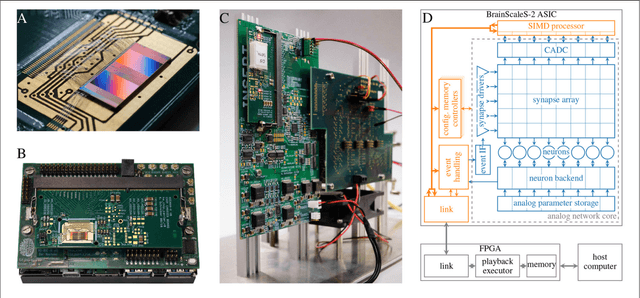

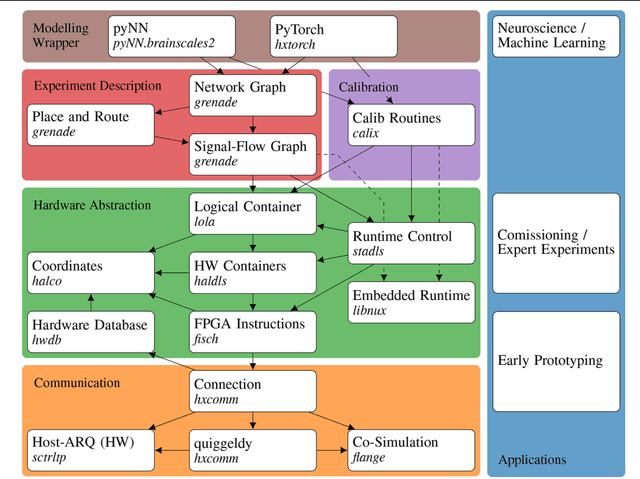

Abstract:Neuromorphic systems open up opportunities to enlarge the explorative space for computational research. However, it is often challenging to unite efficiency and usability. This work presents the software aspects of this endeavor for the BrainScaleS-2 system, a hybrid accelerated neuromorphic hardware architecture based on physical modeling. We introduce key aspects of the BrainScaleS-2 Operating System: experiment workflow, API layering, software design, and platform operation. We present use cases to discuss and derive requirements for the software and showcase the implementation. The focus lies on novel system and software features such as multi-compartmental neurons, fast re-configuration for hardware-in-the-loop training, applications for the embedded processors, the non-spiking operation mode, interactive platform access, and sustainable hardware/software co-development. Finally, we discuss further developments in terms of hardware scale-up, system usability and efficiency.
Inference with Artificial Neural Networks on Analog Neuromorphic Hardware
Jul 01, 2020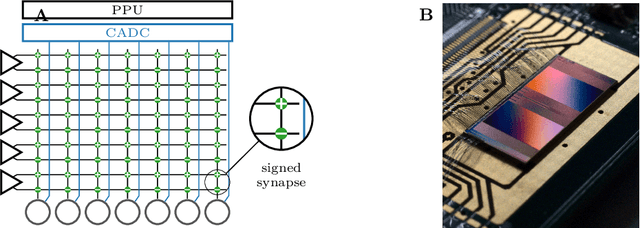
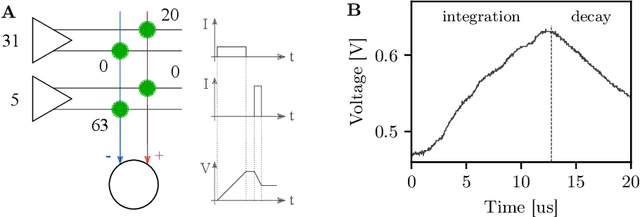

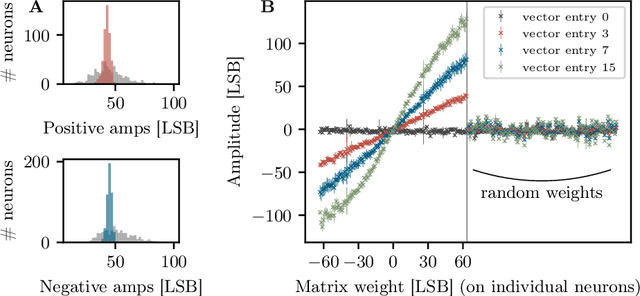
Abstract:The neuromorphic BrainScaleS-2 ASIC comprises mixed-signal neurons and synapse circuits as well as two versatile digital microprocessors. Primarily designed to emulate spiking neural networks, the system can also operate in a vector-matrix multiplication and accumulation mode for artificial neural networks. Analog multiplication is carried out in the synapse circuits, while the results are accumulated on the neurons' membrane capacitors. Designed as an analog, in-memory computing device, it promises high energy efficiency. Fixed-pattern noise and trial-to-trial variations, however, require the implemented networks to cope with a certain level of perturbations. Further limitations are imposed by the digital resolution of the input values (5 bit), matrix weights (6 bit) and resulting neuron activations (8 bit). In this paper, we discuss BrainScaleS-2 as an analog inference accelerator and present calibration as well as optimization strategies, highlighting the advantages of training with hardware in the loop. Among other benchmarks, we classify the MNIST handwritten digits dataset using a two-dimensional convolution and two dense layers. We reach 98.0% test accuracy, closely matching the performance of the same network evaluated in software.
hxtorch: PyTorch for BrainScaleS-2 -- Perceptrons on Analog Neuromorphic Hardware
Jul 01, 2020

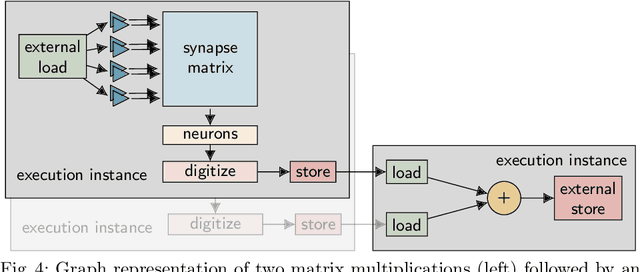

Abstract:We present software facilitating the usage of the BrainScaleS-2 analog neuromorphic hardware system as an inference accelerator for artificial neural networks. The accelerator hardware is transparently integrated into the PyTorch machine learning framework using its extension interface. In particular, we provide accelerator support for vector-matrix multiplications and convolutions; corresponding software-based autograd functionality is provided for hardware-in-the-loop training. Automatic partitioning of neural networks onto one or multiple accelerator chips is supported. We analyze implementation runtime overhead during training as well as inference, provide measurements for existing setups and evaluate the results in terms of the accelerator hardware design limitations. As an application of the introduced framework, we present a model that classifies activities of daily living with smartphone sensor data.
Extending BrainScaleS OS for BrainScaleS-2
Mar 30, 2020



Abstract:BrainScaleS-2 is a mixed-signal accelerated neuromorphic system targeted for research in the fields of computational neuroscience and beyond-von-Neumann computing. To augment its flexibility, the analog neural network core is accompanied by an embedded SIMD microprocessor. The BrainScaleS Operating System (BrainScaleS OS) is a software stack designed for the user-friendly operation of the BrainScaleS architectures. We present and walk through the software-architectural enhancements that were introduced for the BrainScaleS-2 architecture. Finally, using a second-version BrainScaleS-2 prototype we demonstrate its application in an example experiment based on spike-based expectation maximization.
The Operating System of the Neuromorphic BrainScaleS-1 System
Mar 30, 2020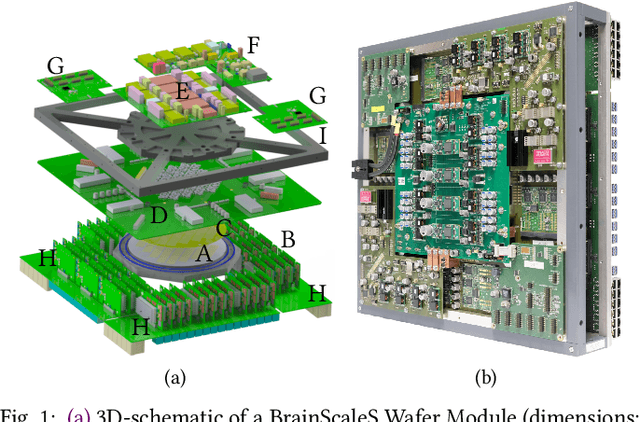
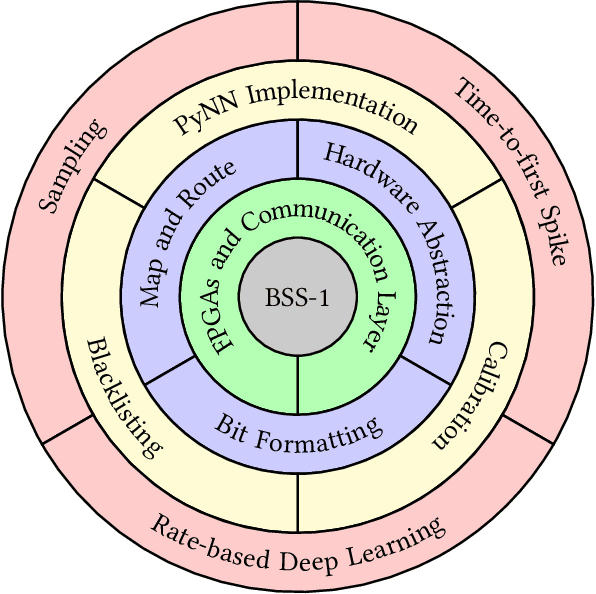
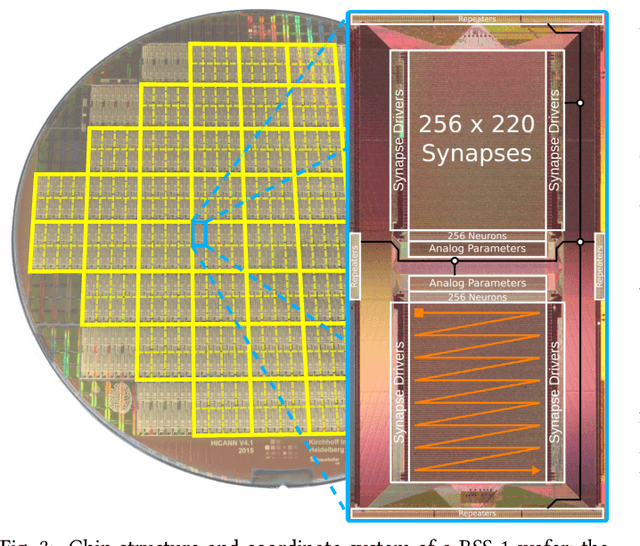
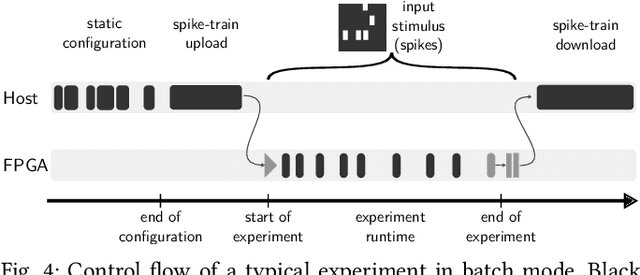
Abstract:BrainScaleS-1 is a wafer-scale mixed-signal accelerated neuromorphic system targeted for research in the fields of computational neuroscience and beyond-von-Neumann computing. The BrainScaleS Operating System (BrainScaleS OS) is a software stack giving users the possibility to emulate networks described in the high-level network description language PyNN with minimal knowledge of the system. At the same time, expert usage is facilitated by allowing to hook into the system at any depth of the stack. We present operation and development methodologies implemented for the BrainScaleS-1 neuromorphic architecture and walk through the individual components of BrainScaleS OS constituting the software stack for BrainScaleS-1 platform operation.
Versatile emulation of spiking neural networks on an accelerated neuromorphic substrate
Dec 30, 2019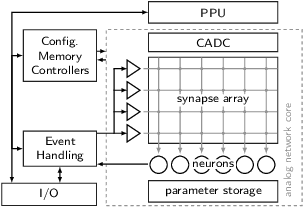
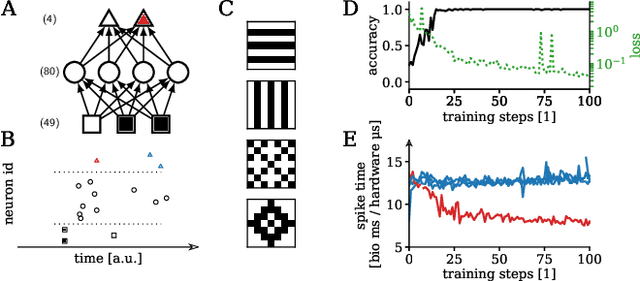
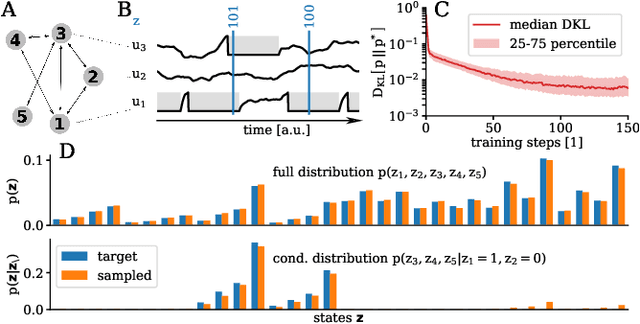
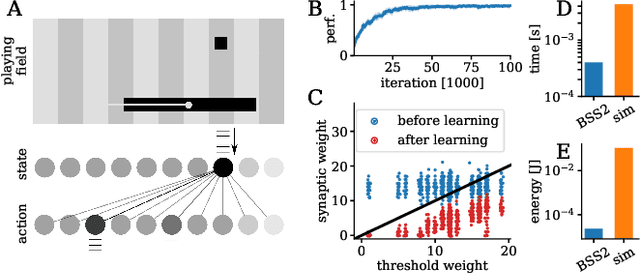
Abstract:We present first experimental results on the novel BrainScaleS-2 neuromorphic architecture based on an analog neuro-synaptic core and augmented by embedded microprocessors for complex plasticity and experiment control. The high acceleration factor of 1000 compared to biological dynamics enables the execution of computationally expensive tasks, by allowing the fast emulation of long-duration experiments or rapid iteration over many consecutive trials. The flexibility of our architecture is demonstrated in a suite of five distinct experiments, which emphasize different aspects of the BrainScaleS-2 system.
Demonstrating Advantages of Neuromorphic Computation: A Pilot Study
Nov 29, 2018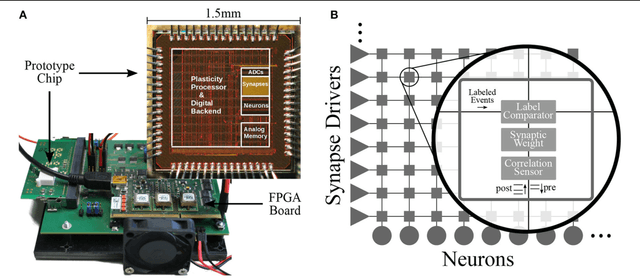
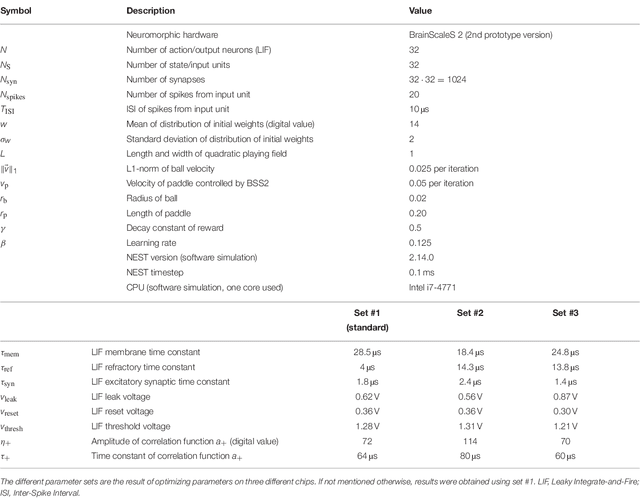
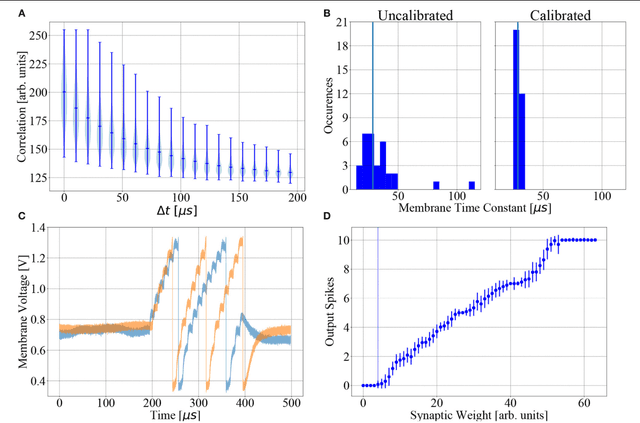
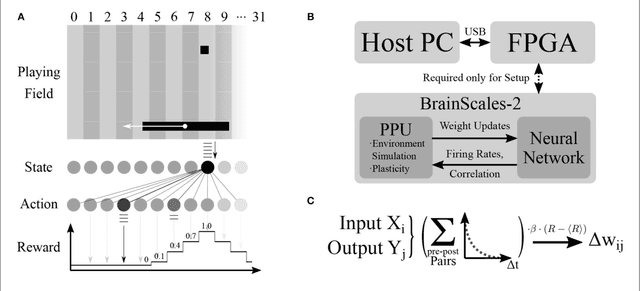
Abstract:Neuromorphic devices represent an attempt to mimic aspects of the brain's architecture and dynamics with the aim of replicating its hallmark functional capabilities in terms of computational power, robust learning and energy efficiency. We employ a single-chip prototype of the BrainScaleS 2 neuromorphic system to implement a proof-of-concept demonstration of reward-modulated spike-timing-dependent plasticity in a spiking network that learns to play the Pong video game by smooth pursuit. This system combines an electronic mixed-signal substrate for emulating neuron and synapse dynamics with an embedded digital processor for on-chip learning, which in this work also serves to simulate the virtual environment and learning agent. The analog emulation of neuronal membrane dynamics enables a 1000-fold acceleration with respect to biological real-time, with the entire chip operating on a power budget of 57mW. Compared to an equivalent simulation using state-of-the-art software, the on-chip emulation is at least one order of magnitude faster and three orders of magnitude more energy-efficient. We demonstrate how on-chip learning can mitigate the effects of fixed-pattern noise, which is unavoidable in analog substrates, while making use of temporal variability for action exploration. Learning compensates imperfections of the physical substrate, as manifested in neuronal parameter variability, by adapting synaptic weights to match respective excitability of individual neurons.
Generative models on accelerated neuromorphic hardware
Jul 11, 2018
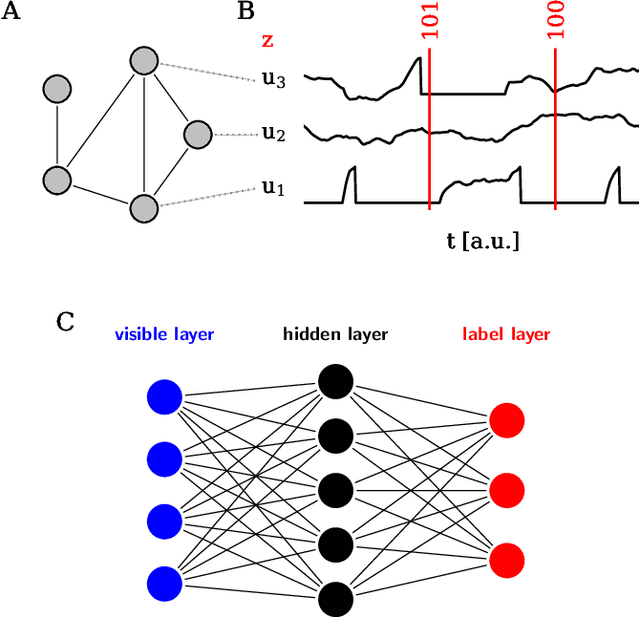
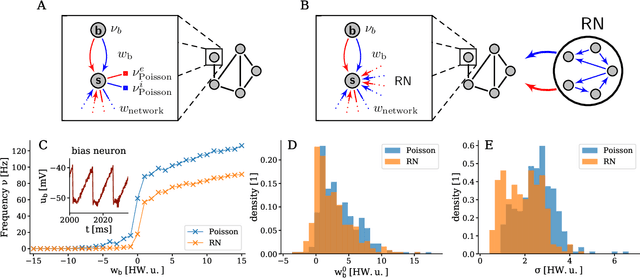
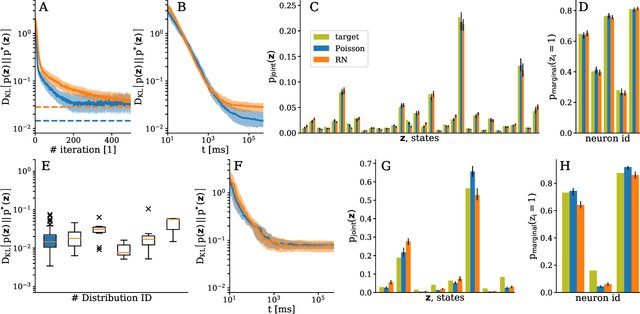
Abstract:The traditional von Neumann computer architecture faces serious obstacles, both in terms of miniaturization and in terms of heat production, with increasing performance. Artificial neural (neuromorphic) substrates represent an alternative approach to tackle this challenge. A special subset of these systems follow the principle of "physical modeling" as they directly use the physical properties of the underlying substrate to realize computation with analog components. While these systems are potentially faster and/or more energy efficient than conventional computers, they require robust models that can cope with their inherent limitations in terms of controllability and range of parameters. A natural source of inspiration for robust models is neuroscience as the brain faces similar challenges. It has been recently suggested that sampling with the spiking dynamics of neurons is potentially suitable both as a generative and a discriminative model for artificial neural substrates. In this work we present the implementation of sampling with leaky integrate-and-fire neurons on the BrainScaleS physical model system. We prove the sampling property of the network and demonstrate its applicability to high-dimensional datasets. The required stochasticity is provided by a spiking random network on the same substrate. This allows the system to run in a self-contained fashion without external stochastic input from the host environment. The implementation provides a basis as a building block in large-scale biologically relevant emulations, as a fast approximate sampler or as a framework to realize on-chip learning on (future generations of) accelerated spiking neuromorphic hardware. Our work contributes to the development of robust computation on physical model systems.
 Add to Chrome
Add to Chrome Add to Firefox
Add to Firefox Add to Edge
Add to Edge